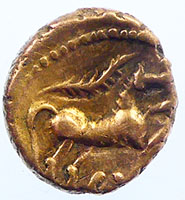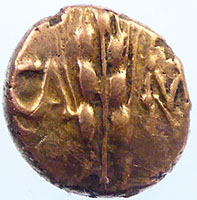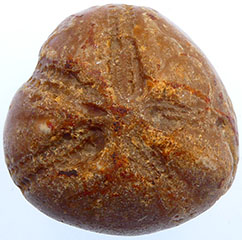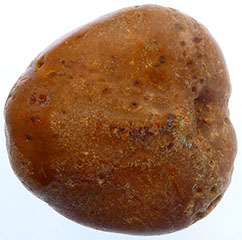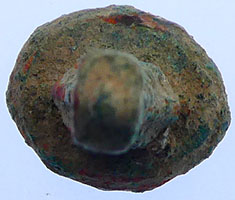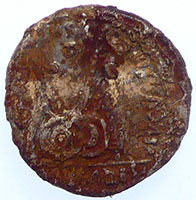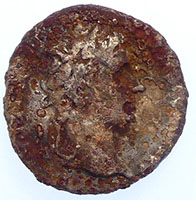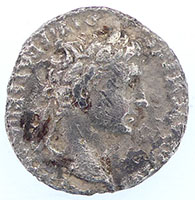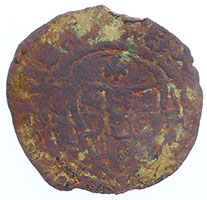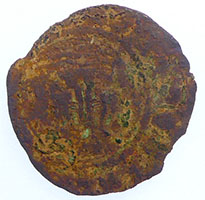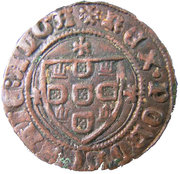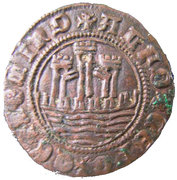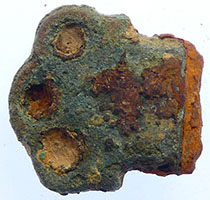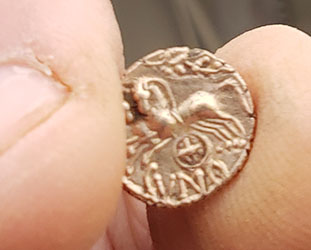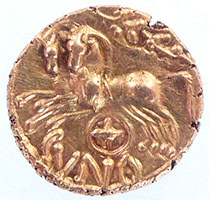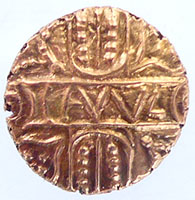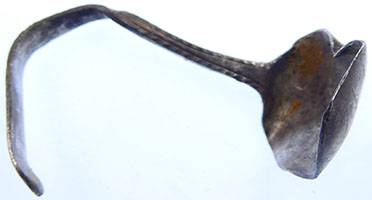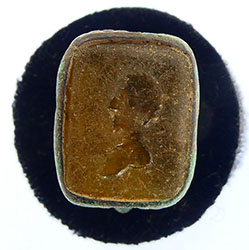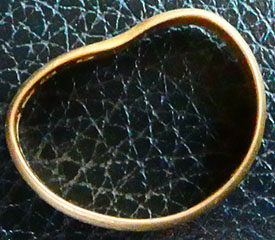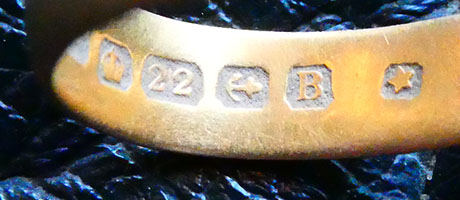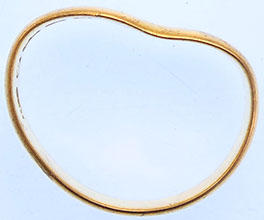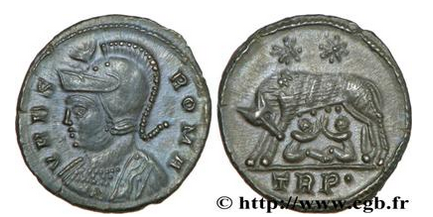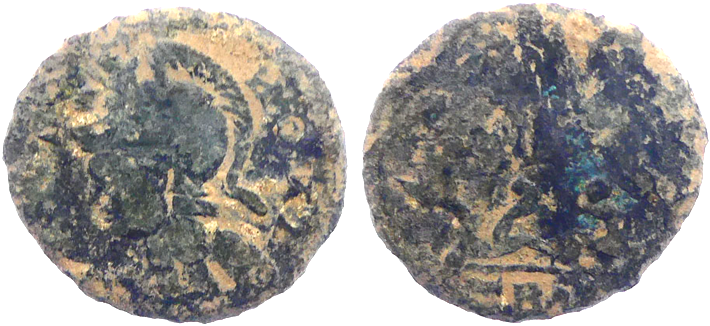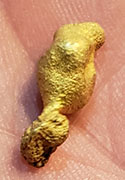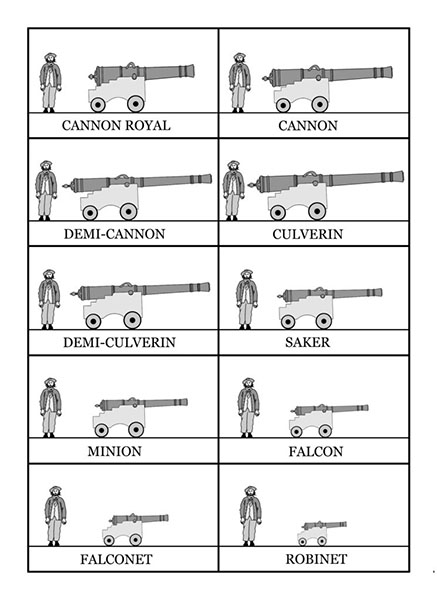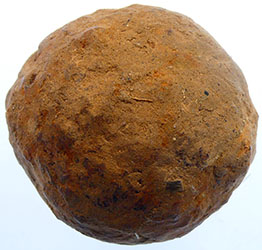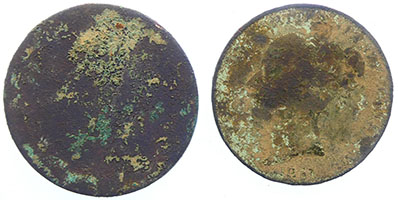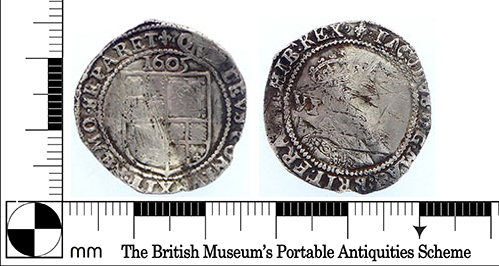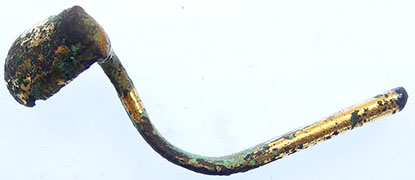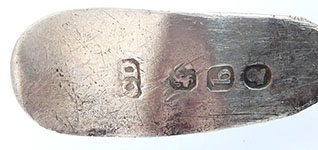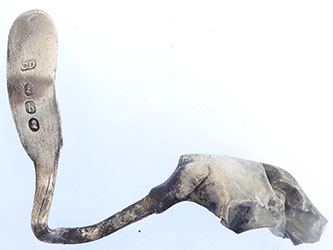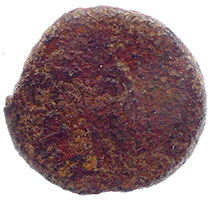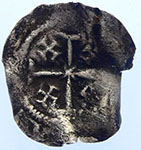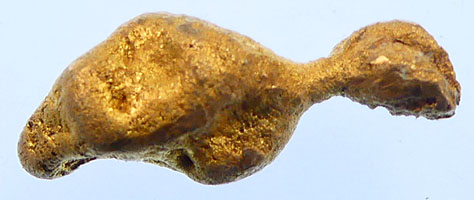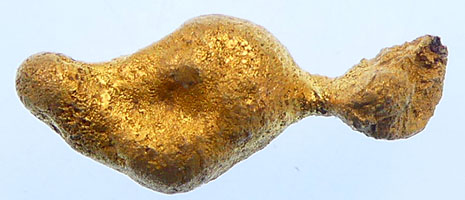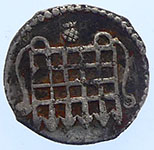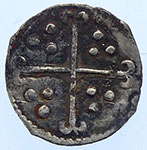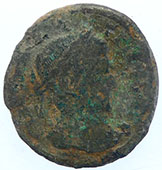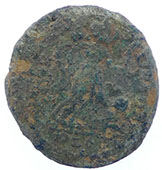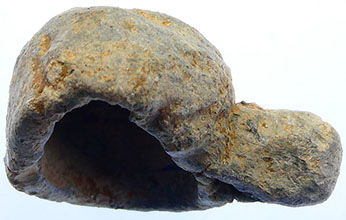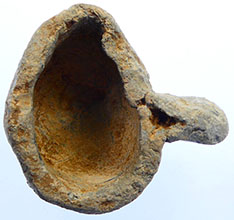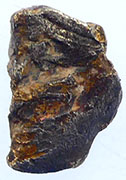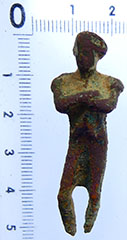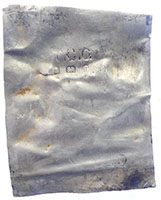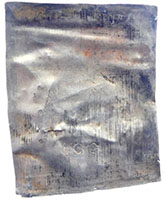

Metal detecting holidays in England with the World's most successful metal detecting club.20 years plus.
Twinned with Midwest Historical Research Society USA.
2023 March Finds page |
|||||||||||||||||
Tx Rob
10-40 AD Cunobelin Celtic gold qtr stater- reported to museum 1.424g, 11.04mm Linear type - Corn ear with central stalk- CA to L,MV to R Horse with ladder mane, branch above Classed as rare ABC2810 |
|||||||||||||||||
Large hollow copper bust- could be William IV 1834 |
|||||||||||||||||
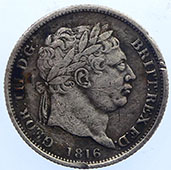 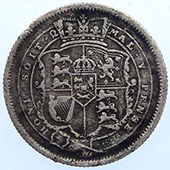 |
  |
||||||||||||||||
| 1816 George III milled silver shilling | 1816 George III milled silver sixpence | ||||||||||||||||
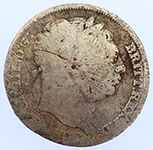  |
 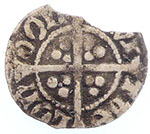 |
||||||||||||||||
| 1818 George III milled silver sixpence | 1377-1399 Richard II hammered silver half penny Obv + RICARD. REX x ANGL Rev CIVI/TAS/LON/DON- London mint |
||||||||||||||||
 |
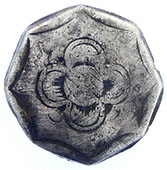 |
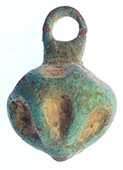 |
|||||||||||||||
Unrecorded 5th Dragoon guards button Description: Crowned Hannover Horse over V D.G with VESTIGIA NULLA RETRORSUM around. Category: Dragoons Type of button: Slightly Convex; Metal: Copper Alloy, silver gilded. Backmark: ; Date: c1780-1796 Crimera war period The 5th Dragoons became Princess Charlotte of Wales's Dragoon Guards in 1804. |
18thC Royal navy silver button | 16thC Tudor button | |||||||||||||||
|
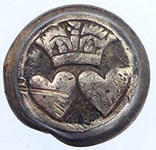 |
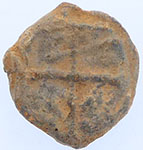 |
|||||||||||||||
| Victorian copper jewelry item | 17thC silver button - reported as treasure to museum | Medieval lead token | |||||||||||||||
  |
  |
||||||||||||||||
| 1247 Henry III hammered silver voided long cross half penny | 1836 William IV milled silver four pence | ||||||||||||||||
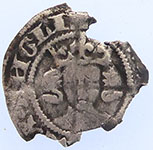 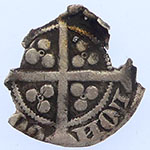 |
 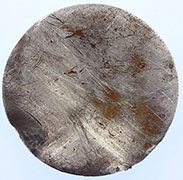 |
||||||||||||||||
1327 Edward III hammered silver penny Obv **X ANGLI + Rev/LON/DO ** - London mint |
1729 French Louis XV milled silver coin - 1/2 ECU (44 Sols) | ||||||||||||||||
450 million year old fossils Sea Urchin EchinoidEchinoids (sea urchins and sand dollars) are echinoderms, related to sea stars and crinoids. All echinoderms have external skeletons made of numerous plates of the mineral calcite (a form of calcium carbonate), and a unique water vascular system that drives most of their motion. Echinoids have rounded or flattened shells, called tests, which bear numerous spines. Tiny tube feet, connected to the water vascular system, extend through holes in the test and allow the animals to move on or within the sea floor. All echinoids exhibit the characteristic five-fold symmetry of echinoderms. |
|||||||||||||||||
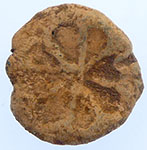 |
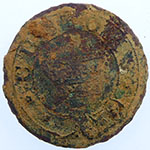 |
 |
|||||||||||||||
| 15thC lead token | 19thC Customs button | Huge toy cannon | |||||||||||||||
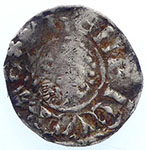 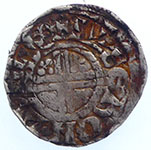 |
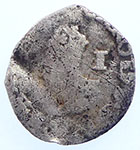  |
||||||||||||||||
1199 King John hammered silver short cross penny- class 5 Obv hENRICVS REX Rev ILGER 0N LVNI - Moneyer Ilger of London mint |
1625 Charles 1st hammered silver penny | ||||||||||||||||
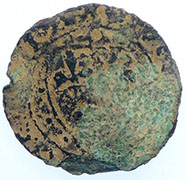  |
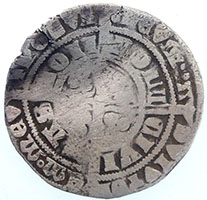  |
||||||||||||||||
| 1380 - French 'shield of France' type - 3 Lis in a shield and '4 Lis in a quadrant' | 1352- 1353 Edward III hammered silver groat (4 pence ) Series D Cross 1 - annulet stops, Pre treaty period Obv +EDWARD Do Go REXo ANGL Z FRANCo D hYB Rev CIVI/TAS/LON/DON - London mint |
||||||||||||||||
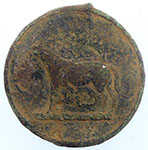 |
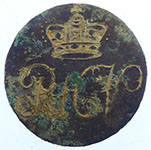 |
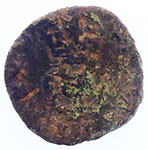  |
|||||||||||||||
| 19thC livery button | Army Volunteers button - research it 'RACV' |
1634 Charles 1st hammered copper rose farthing | |||||||||||||||
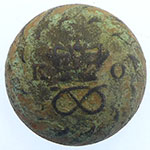 |
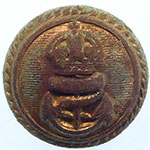 |
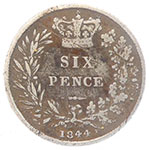 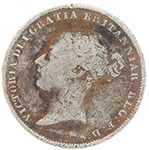 |
|||||||||||||||
Description: Crowned 38 over 'Staffs' knot design. Category: Regular Army; Type of button: Convex 16mm; Metal: Copper Alloy, silvered; Backmark: Unreadable; Date: c1800-1820 |
RN Capt / Commander - 1901 Kings crown |
1844 Victoria milled silver sixpence | |||||||||||||||
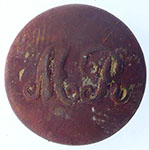 |
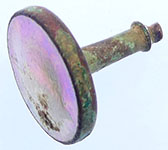 |
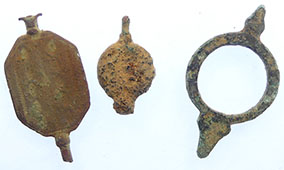 |
|||||||||||||||
| Victorian Midland Railway button | Victoria collar stud | Georgian watch winders | |||||||||||||||
Medieval seal matrix - needs soaking to reveal inscription |
|||||||||||||||||
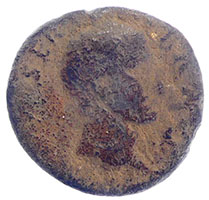  |
  |
||||||||||||||||
Roman silver coin sent for ID The "silverroman" is Galba - one of the short-lived list of emperors succeeding Nero, from which eventually Vespasian became the long-term winner and took over, founding the Flavian dynasty (which included Titus and Domitian - both sons of Vespasian). |
1561 Elizabeth 1st hammered silver sixpence Pheon mint mark | ||||||||||||||||
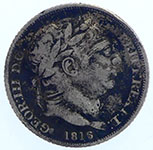 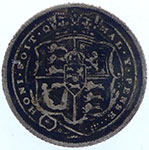 |
  |
||||||||||||||||
| 1816 George III milled silver sixpence | 1943 George VI milled silver hlaf-crown - 30 pence | ||||||||||||||||
 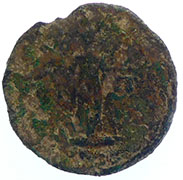 |
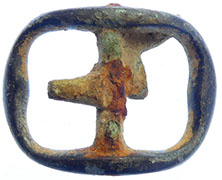 |
||||||||||||||||
| Roman bronze coin sent for ID | Georgian buckle | ||||||||||||||||
18thC decorated musket mount ? |
|||||||||||||||||
  |
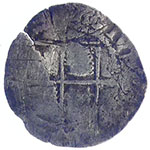 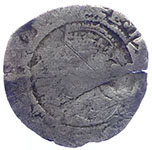 |
||||||||||||||||
| 1696 William III milled silver shilling | 1582-4 Elizabeth 1st hammered silver penny - A mint mark | ||||||||||||||||
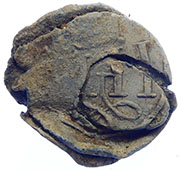 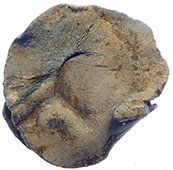 |
 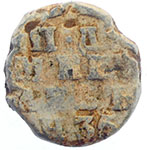 |
||||||||||||||||
| Post medieval cloth seal | 1835 Russian lead bale seal | ||||||||||||||||
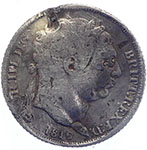 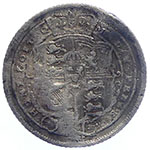 |
 |
||||||||||||||||
| 1816 George III milled silver sixpence | Roman buckle tongue | ||||||||||||||||
 |
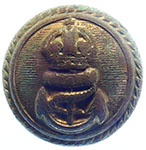 |
 |
|||||||||||||||
| 1500-1700 mount | Description: 63 incised within eight pointed star. Category: Regular Army; Type of button: Flat 22mm ; Metal: Copper Alloy silvered; Backmark: I McGOWAN GERRARD ST LONDON Date: c1800-1820 An officers example to the 63rd unusally with incised rather than raised numerals, known as the 63rd Regt of Foot 1758-1782 and then West Suffolk 1782-1881. |
Admiralty Civil Police In use 1940 - 1949 became the Admiralty Constabulary in 1949 |
Victorian Engineers button | ||||||||||||||
 |
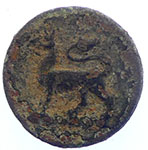 |
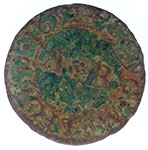 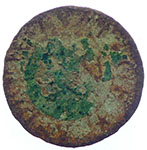 |
|||||||||||||||
| George V crown - General Post Office button | 19thC livery button | 1652 Andrew Byat of Suffolk hammered copper trade farthing | |||||||||||||||
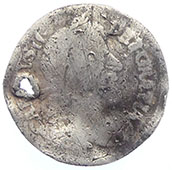 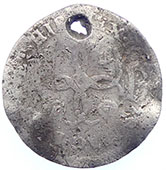 |
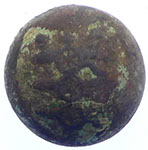 |
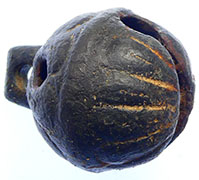 |
|||||||||||||||
| 1679 Charles II milled silver four pence | 18thC Royal Artillery cuff button | 18thC crotal bell | |||||||||||||||
  |
 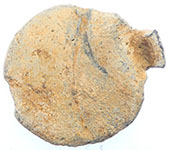 |
||||||||||||||||
| 16thC Elizabeth 1st hammered silver penny | Post medieval cloth seal | ||||||||||||||||
  |
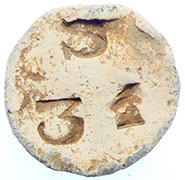  |
||||||||||||||||
| 1825 Russian lead bale seal | Unknown lead trade weight | ||||||||||||||||
 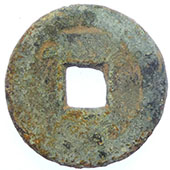 |
  |
||||||||||||||||
| 19thC Chinese cash coin | RARE Right facing Issue .1739 ADMIRAL VERNON - BATTLE & CAPTURE of PORTOBELLO | ||||||||||||||||
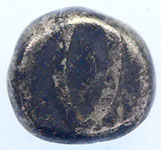 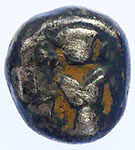 |
  |
||||||||||||||||
East India Company Obverse shows Vishnu standing, holding chakra in each upper hand |
1706 Anne milled silver sixpence - Exeter mint | ||||||||||||||||
 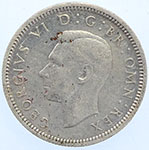 |
 |
 |
|||||||||||||||
| 1946 George VI milled silver sixpence | 18thC Royal artillery cuff button | 1900's Generic Merchant Navy Officers | |||||||||||||||
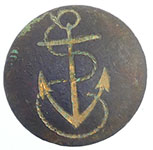 |
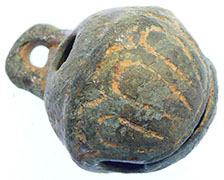 |
 |
|||||||||||||||
| Capt / Commander - 1774-1787 RN Master & Mate - 1787-1807 RN Surgeon - 1787-1805 RN Purser - 1787-1807 RN Warrant Officer - 1787-1860 RN Midshipman - 1787-1812 RN Volunteer Gr.I - 1787-1812 RN Instructors - 1727-1842 RN Engineer 1st Cl. - 1837-1841 Var. 01 . . . 1774 - 1860 In use 1774 - 1860 |
18thC crotal bell | Medieval bar mount | |||||||||||||||
 |
 |
  |
|||||||||||||||
One piece Navy buttons HONI SOIT QUI MAN Y PENSE PACKET Honi soit qui mal y pense (Old French: shame upon him who thinks evil of it) RN - Packet Service c.1800-1811 |
c10thC Saxon stirup mount | 1634 Charles 1st hammered copper rose farthing | |||||||||||||||
  |
 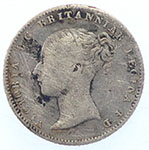 |
||||||||||||||||
1787
2½ Schilling Courant = 1⁄24 Rigsdaler Specie |
1842 Victoria milled silver four pence | ||||||||||||||||
 |
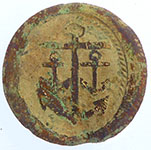 |
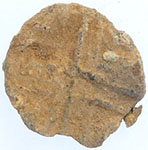 |
 |
||||||||||||||
| 18thC crotal bell | RN Master - 1807-1825
|
15thC lead token | 17thC lead token | ||||||||||||||
2nd Roman silver coin - sent for ID 3.38g, 18.01mm dia - 2.3mm thick
"AUGUSTUS. 27 BC-14 AD. AR Denarius, Lugdunum (Lyon) mint. Struck 2 BC-4 AD. Laureate head right / Gaius and Lucius standing, facing; shield and spears between them; simpulum and lituus above. RIC I 207; RSC 43 |
|||||||||||||||||
 |
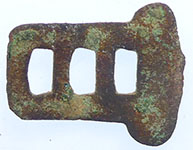 |
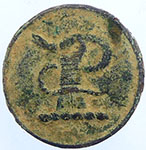 |
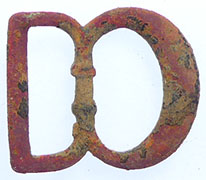 |
||||||||||||||
| 17thC clothing fastener | 18thC clog fastener | 19th C livery button | 1500-1700 buckle | ||||||||||||||
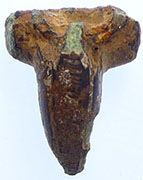 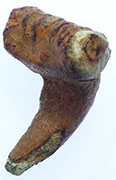 |
|||||||||||||||||
| 2nd C Roman fibular brooch | 1849 Victoria milled silver sixpence | ||||||||||||||||
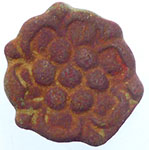 |
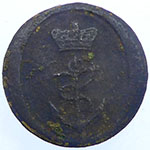 |
 |
 |
||||||||||||||
| 16th Tudor rose mount | RN Capt / Commander - 1812 RN Lieutenant - 1812 RN Midshipman - 1812 RN Volunteer Gr.I - 1812 After this issue a Midshipman will have the Captain's style |
Royal Navy Lieutenant - 1748 | 56th REGIMENT OF FOOT. / AFTER 1881 :- 2nd Battalion The Essex Regiment Officer - 1844-1871 |
||||||||||||||
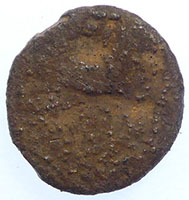  |
|||||||||||||||||
| BC Republican Roman silver coin - needs cooking to remove crust | |||||||||||||||||
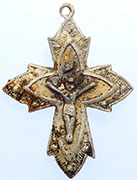 |
 |
 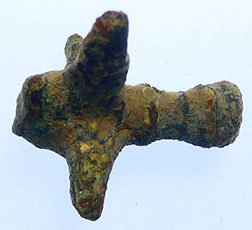 |
|||||||||||||||
| 20thC cruifix | 20thC Bag pipe enameled badge | Medieval prick spur | |||||||||||||||
Unknown hammered copper coin researching it - ID by Virg Phill
ObverseLettering: +ALFOS CEPT ET DOMINO ReverseCastle over waves. Lettering: *REX.PORTUGALIE.ALGA
|
|||||||||||||||||
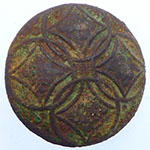 |
 |
 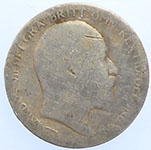 |
|||||||||||||||
| Georgian button | Georgian button | 1906 Edward VII milled silver sixpence | |||||||||||||||
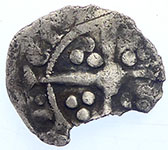 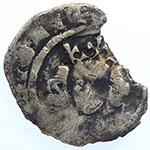 |
  |
||||||||||||||||
1327 Edward III hammered silver long cross penny Quadrefoil at centre of reverse cross Obv **** ANGLI Rev EBO** York mint |
1900 Victoria milled silver three pence | ||||||||||||||||
 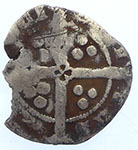 |
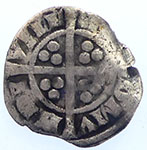  |
||||||||||||||||
1327 Edward III hammered silver long cross penny Quadrefoil with pellet at centre of reverse cross Obv + EDW Rev **CI/CIVI/TAS - York mint |
1279 Edward 1st hammered silver penny - Class 10cf reading VILL Obv +EDW***NGL DNS hYB Rev VILL/**/DMV/NDI - Bury St Edmunds mint |
||||||||||||||||
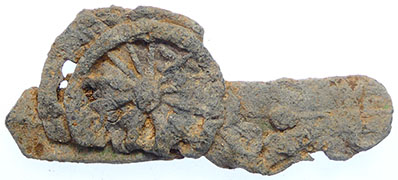 |
 |
 |
|||||||||||||||
| Interesting large lead Royal Artillery mount | 19thC buckle | 20th C harness buckle | |||||||||||||||
 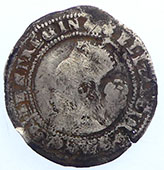 |
  |
||||||||||||||||
| 1575 Elizabeth 1st hammered silver three pence | 1582 Elizabeth 1st hammered silver six pence | ||||||||||||||||
  |
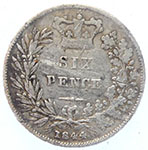  |
||||||||||||||||
| 1649 Commonwealth hammered silver half groat | 1844 Victoria milled silver six pence | ||||||||||||||||
  |
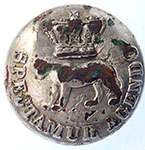 |
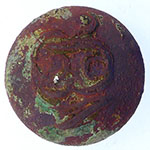 |
|||||||||||||||
| Georgian gold watch winder | 'Spectamur Agendo' Spectamur Agendo 1st Battalion The East Lancashire Regiment August and September, 1914
|
20th Regiment of foot ? | |||||||||||||||
  |
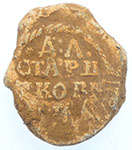 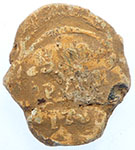 |
||||||||||||||||
| 1940 George VI milled silver florin - 24 pence | 1740 Russian lead bale seal | ||||||||||||||||
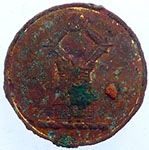 |
 |
  |
|||||||||||||||
| 19thC livery button | Conservative Club button | ||||||||||||||||
Medieval knife pommel |
|||||||||||||||||
  |
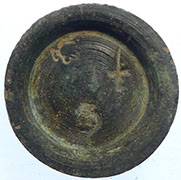 |
 |
|||||||||||||||
| Interesting lead button | Georgian trade weight | The Great Eastern Railway button | |||||||||||||||
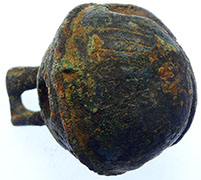 |
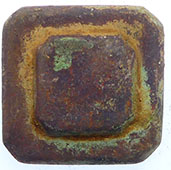 |
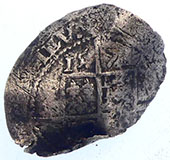 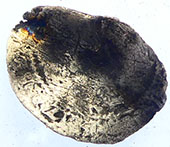 |
|||||||||||||||
| 18th C crotal bell | 1500-1700 mount | 1575 Elizabeth 1st hammered silvber half groat | |||||||||||||||
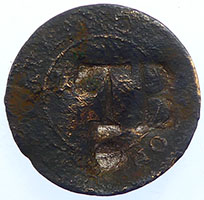 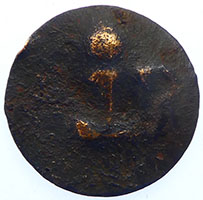 |
 |
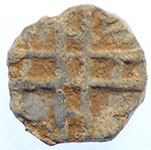 |
|||||||||||||||
| Large hammered copper coin overstamped TB ? | Essex county badge | 17thC lead token | |||||||||||||||
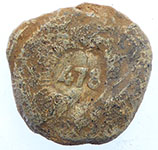 |
 |
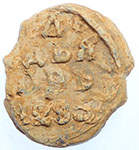  |
|||||||||||||||
| Post medieval lead bale seal | 17thC lead token | 1815 Russian lead bale seal | |||||||||||||||
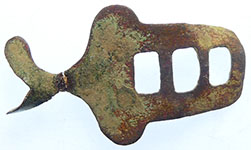 |
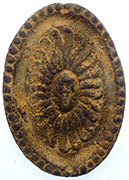 |
 |
|||||||||||||||
| 18thC clog fastener | Georgian mount | 1900's Generic Merchant navy button | |||||||||||||||
 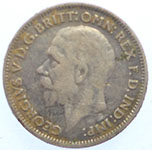 |
 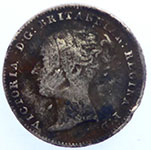 |
||||||||||||||||
| 1933 George V milled silver sixpence | 1846 Victoria milled silver four pence | ||||||||||||||||
 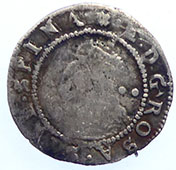 |
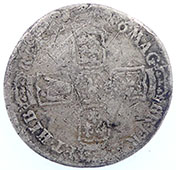 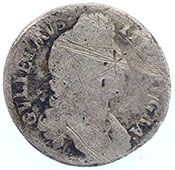 |
||||||||||||||||
| 1584-86 Elizabeth 1st hammered silver half groat - Escallop mint mark | 1696 William III milled silver shilling | ||||||||||||||||
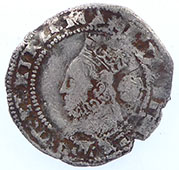  |
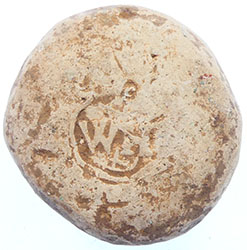  |
||||||||||||||||
| 1575 Elizabeth 1st hammered silver three pence - Eglantine mint mark | Huge Post medieval lead trade weight - Possible William III WH |
||||||||||||||||
Fl Paul
Pictures from the field
1.35g, 11.49mm 8-13 AD Celtic gold Cunobelin qtr stater- Bigga type- reported to museum |
|||||||||||||||||
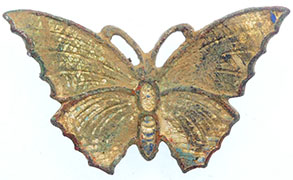 |
 |
|
|||||||||||||||
| 20thC butterfly brooch | 1500-1700 mount | Georgian silver spoon - sterling silver mark | |||||||||||||||
 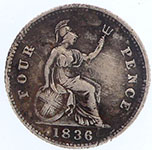 |
  |
||||||||||||||||
| 1836 William IV milled silver four pence | 1816 George III milled silver sixpence | ||||||||||||||||
Neat Georgian fob seal |
|||||||||||||||||
  |
 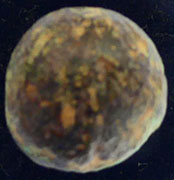 |
||||||||||||||||
| 1247 Henry III hammered silver voided half penny | Roman pin | ||||||||||||||||
1850 Birmingham mint - 22 carat gold ring - star mark 4.48g, 22.7mm - Maker HS |
|||||||||||||||||
  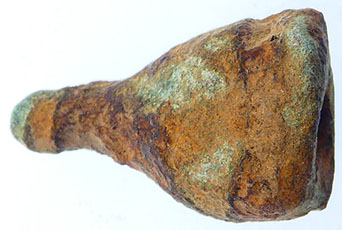 |
|||||||||||||||||
| Roman bronze finial | |||||||||||||||||
  |
  |
||||||||||||||||
| 1625 Chalres 1st hammered silver penny | 1817 George III milled silver sixpence | ||||||||||||||||
 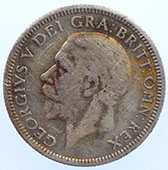 |
  |
||||||||||||||||
| 1931 George V milled silver shilling | 1573 Elizabeth 1st hammered silver sixpence | ||||||||||||||||
Iron Age harness ring |
|||||||||||||||||
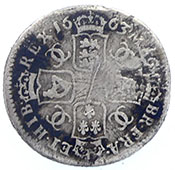 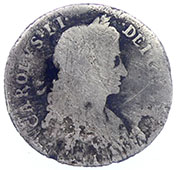 |
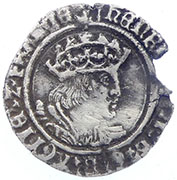  |
||||||||||||||||
| 1663 Charles II milled silver shilling | 1526-44 Henry VIII hammered silver gorat - Arrow mint mark
|
||||||||||||||||
 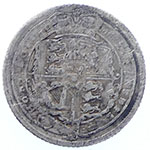 |
 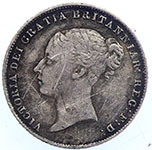 |
||||||||||||||||
| 1818 George III milled silver sixpence | 1864 Victoria milled silver sixpence | ||||||||||||||||
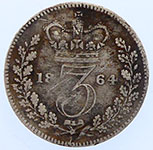 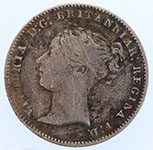 |
  |
||||||||||||||||
| 1864 Victoria milled silver three pence | Medieval hanress shield pendant | ||||||||||||||||
 |
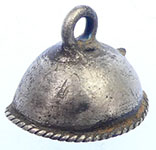 |
 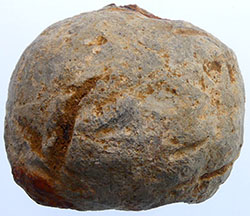 |
|||||||||||||||
| 19thC New York Yacht club button | Georgian silver button | Post medieval lead steelyard weight | |||||||||||||||
 |
 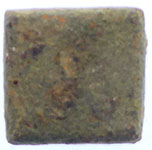 |
||||||||||||||||
| Georgian watch winders | 18thC bullion weight | ||||||||||||||||
Silver jewelry ring with diamonds - charm fitting |
|||||||||||||||||
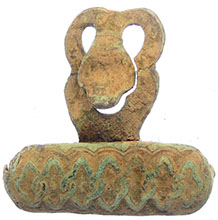  |
 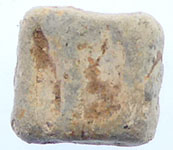 |
||||||||||||||||
| Victorian copper clasp | 18thC lead apothecary weight | ||||||||||||||||
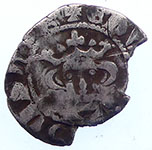  |
 |
 |
|||||||||||||||
1279 Edward 1st hammered silver penny Obv +EDW** hYB Rev CIVI/T**/**N/DON - London mint |
Medieval buckle | 16thC Tudor buckle | |||||||||||||||
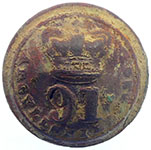 |
 |
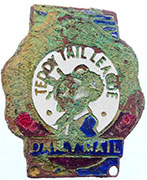 |
|||||||||||||||
91st Regiment of foot- Argyllshire Highlanders O/R's (Brass) - 1802-1881 |
1500-1700 mount | Teddy Tail League badge is probably 1930s, the two main makers of these badges were J R Gaunt of London and Roden of London.
'Teddy Tail the cartoon mouse and main character of the Teddy Tail League delighted children with his stories for 40 years. He is distinguished by the suit he wears and always shown with a knot in his tail. A somewhat mischievous guy he loved the occasional prank, parties and getting into all sorts of adventures with his friends. Teddy Tail lived in the little village of Whiskertown whose friend included Dr. Beetle, Piggy, Kitty Puss the cat and Dougie the duckling amongst others. Teddy Tail’s main claim to fame is that his is the first cartoon strip regularly featured in a British newspaper. His first appearance was in the Daily Mail on the 5th April 1915 and continued until 1962. He disappeared in 1942, a victim of wartime paper shortages and post-war austerity but was revived in 1949 to the delight of his so many fans'. |
|||||||||||||||
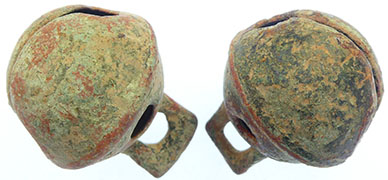 |
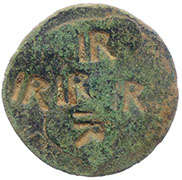  |
||||||||||||||||
| 2 - 18Th C crotal bells | Interesting heavily overstamped copper penny - IR | ||||||||||||||||
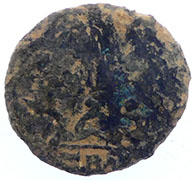  |
|||||||||||||||||
4thC Roman bronze coin - sent for ID This is a centenionalis from the astronomical numbers of them, in several designs, which Constantine I approved to celebrate his move of the Imperial government seat to Constantinople. |
|||||||||||||||||
 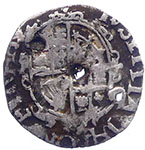 |
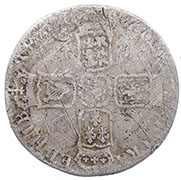 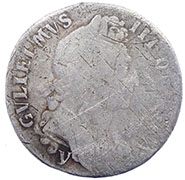 |
||||||||||||||||
| 1625 Charles 1st hammered silver penny | 1696 William III milled silver shilling - York mint | ||||||||||||||||
 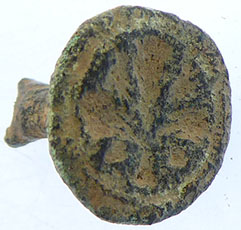 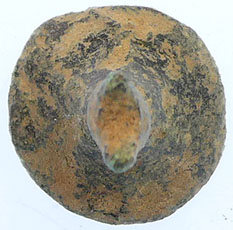 |
|||||||||||||||||
| Medieval seal matrix | |||||||||||||||||
 |
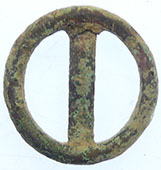 |
  |
|||||||||||||||
| Georgian trade weight | Medieval annular buckle | 1247 Henry III hammered silver voided long cross penny Rev ENT/EDM - Bury St Edmunds mint |
|||||||||||||||
Pictures from the field - gold nugget found
Ancient gold nugget - 16.01mm L x 6 mm T 2.94g |
|||||||||||||||||
  |
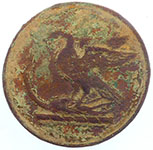 |
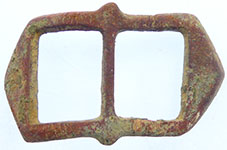 |
|||||||||||||||
1279 Edward 1st hammered silver penny Obv +EDWAR ANGL DNS hYB Rev CIVI/TAS/CAN/TOR - Canterbury mint |
19thC livery button | 1500-1650 buckle | |||||||||||||||
  |
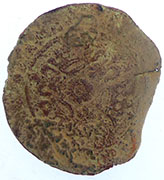 |
 |
|||||||||||||||
| 1859 Victoria milled silver three pence | 1586 Hans Krauwincel II Rose orb Jetton | ||||||||||||||||
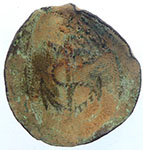 |
 |
 |
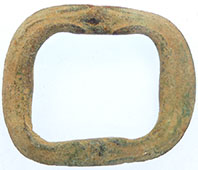 |
||||||||||||||
| RN Capt / Commander - 1787 RN Lieutenant - 1787 |
15thC lead token | Georgian pipe tamper | Georgian buckle | ||||||||||||||
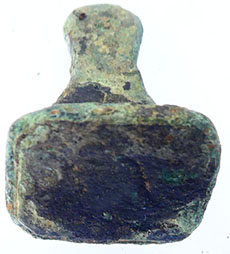   |
|||||||||||||||||
| Very unsual design Georgian seal matrix | |||||||||||||||||
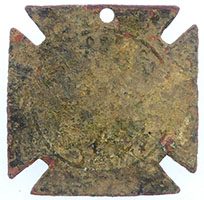 |
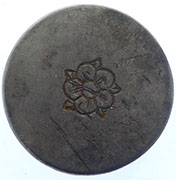 |
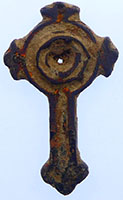 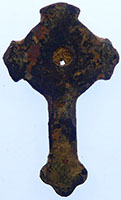 |
|||||||||||||||
| Victorian pendant | 18thC Royal Navy button | Medieval enameled crucifix mount | |||||||||||||||
1640's Civil war iron cannon ball 1/2lb - 40mm dia - Robinet |
|||||||||||||||||
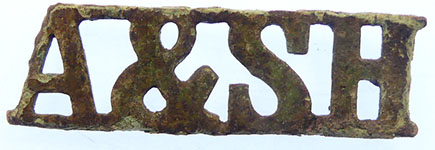 |
 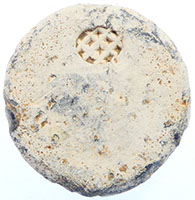 |
||||||||||||||||
| The Argyll and Sutherland Highlanders was a line infantry regiment of the British Army that existed from 1881 until amalgamation into the Royal Regiment of Scotland on 28 March 2006. | Post medieval lead trade weight - weave impression | ||||||||||||||||
 |
 |
 |
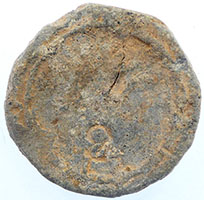 |
||||||||||||||
| Medieval bronze pot foot | Medieval bronze pot leg | Georgian trade weight | Post medieval lead trade weight | ||||||||||||||
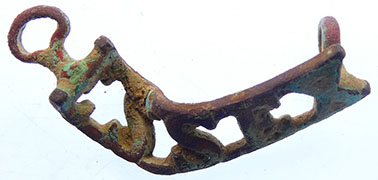 |
  |
||||||||||||||||
| WW1 Essex Regiment lapel badge | 2ndC Roman fibular brooch | ||||||||||||||||
Interesting comparison of a 1796 George III cartwheel penny and a 1861 1/13th of a shilling Jersey copper |
|||||||||||||||||
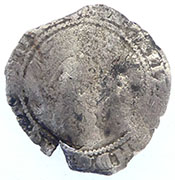  |
 |
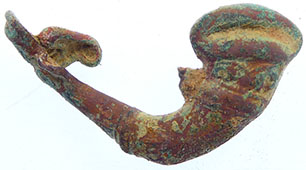 |
|||||||||||||||
| 1575 Elizabeth 1st hammered silver sixpence | Interesting hanging pendant | Rifle regiment cap badge | |||||||||||||||
 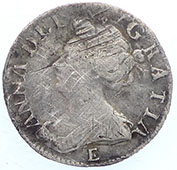 |
 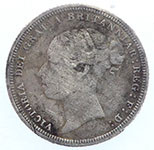 |
||||||||||||||||
| 1707 Anne milled silver shilling - Edinburgh mint | 1883 Victoria milled silver sixpence | ||||||||||||||||
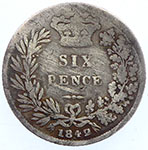  |
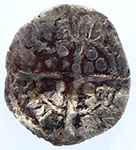 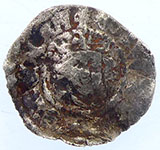 |
||||||||||||||||
| 1842 Victoria milled silver sixpence | 1327 Edward III hammered silver farthing Obv +EDW*****REX AN Rev CIVI/TAS/LON/DON - London mint |
||||||||||||||||
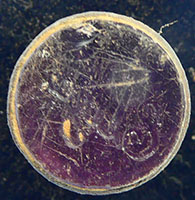 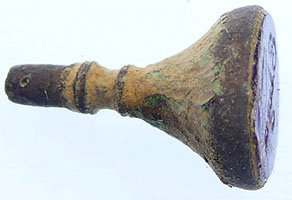 |
 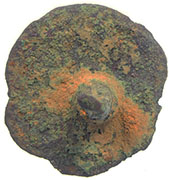 |
||||||||||||||||
| Georgian fob seal | Medieval sexfoil mount | ||||||||||||||||
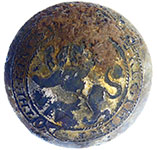 |
 |
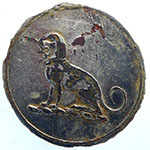 |
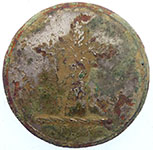 |
||||||||||||||
| Era: Pre 1881 Victorian 4th (The King's Own) Regiment of Foot Button (Large) | 15thC lead token | 19thC livery button | 19thC livery button | ||||||||||||||
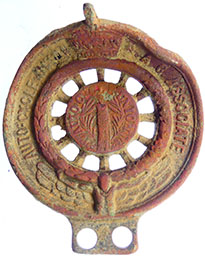 |
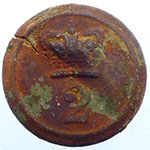 |
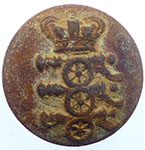 |
|||||||||||||||
| 1924-25 RAC Associate Auto Cycle Union member's badge | O/R's - 1855-81 THE 2nd REGIMENT OF FOOT The Second Regiment of Foot Guards i.e "The Coldstream Guards". |
Post 1831 version - three cannons pointing left with the Royal crown over- The design was changed in 1840 with the addition of the 'Ubique' scroll below the lower cannon | |||||||||||||||
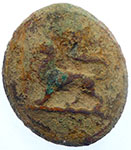 |
 |
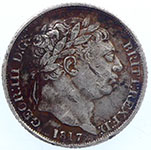  |
|||||||||||||||
| 19thC livery button | WWII Royal Airforce button | 1817 George III milled silver sixpence | |||||||||||||||
 |
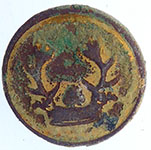 |
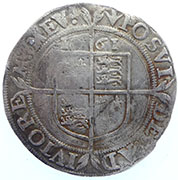 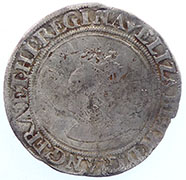 |
|||||||||||||||
| WW1 East Lancashire cap badge | 19thC livery button | 1561 Elizabeth 1st hammered silver sixpence - Pheon mint mark 2.86g,27.03mm |
|||||||||||||||
|
|||||||||||||||||
1605 James 1st hammered silver sixpence - Lis mint mark 2.86g, 25.4mm |
|||||||||||||||||
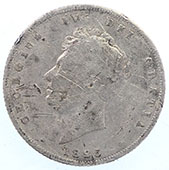 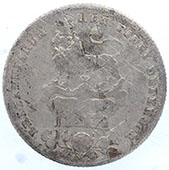 |
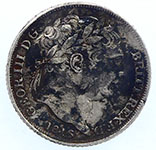  |
||||||||||||||||
| 1825 George IV milled silver shilling | 1816 George III milled silver sixpence | ||||||||||||||||
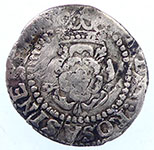 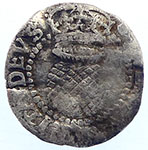 |
  |
||||||||||||||||
| 1603 James 1st hammered silver penny | 1884 Victoria milled silver three pence | ||||||||||||||||
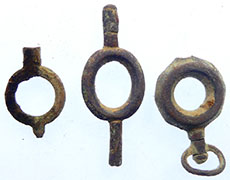 |
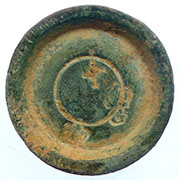 |
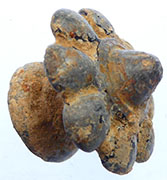 |
|||||||||||||||
| Georgian watch winders | Georgian trade weight - crown G cipher | Georgian lead tobacco jar lid handle | |||||||||||||||
Anglo Saxon gilded copper cosmetic spoon |
|||||||||||||||||
 |
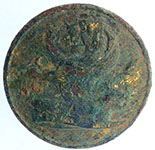 |
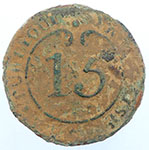 |
|||||||||||||||
| 19thC livery button | 19thC livery button | French Infantry Button 13th Line Regiment Circa 1803-1814 |
|||||||||||||||
  |
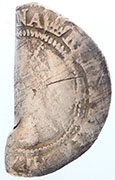 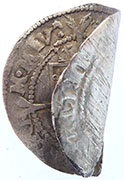 |
||||||||||||||||
| 1861 Victoria milled silver sixpence | 1567-70 Elizabeth 1st hammered silver sixpence - Coronet mint mark | ||||||||||||||||
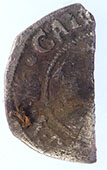 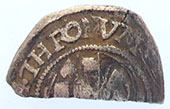 |
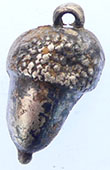 |
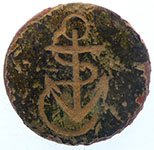 |
|||||||||||||||
1638-42 Charles 1st Aberystwyth hammered silver half groat - Large plume |
Victorian silver pendant | Capt / Commander - 1774-1787 RN Master & Mate - 1787-1807 RN Surgeon - 1787-1805 |
|||||||||||||||
 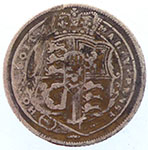 |
  |
||||||||||||||||
| 1819 George III milled silver sixpence | 1922 George V milled silver florin - 24 pence | ||||||||||||||||
1817 London silver spoon - duty paid symbol - date letter b Maker CD -Charles Davy 1816 |
|||||||||||||||||
 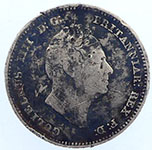 |
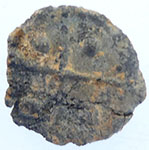 |
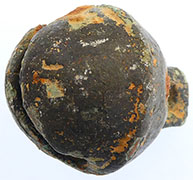 |
|||||||||||||||
| 1836 William IV milled silver four pence | 15thC lead token | 18thC crotal bell | |||||||||||||||
 |
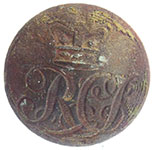 |
 |
|||||||||||||||
| 1500-1650 buckle | Army button RCS ? |
18thC crotal bell | |||||||||||||||
Roman silver coin - needs 'cooking' to remove crust |
|||||||||||||||||
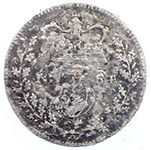 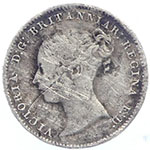 |
  |
||||||||||||||||
| 1864 Victoria milled silver three pence | Papal States 1868 Pope Pius IX Silver 10 Soldi Coin | ||||||||||||||||
  |
 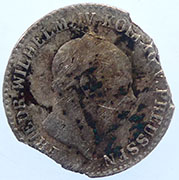 |
||||||||||||||||
| 1931 George V milled silver sixpence | 2½ Silber Groschen - Friedrich Wilhelm IV Kingdom of Prussia (German States) |
||||||||||||||||
1158 -1189 AD Henry II hammered silver penny ' Tealby' cross and crosslet type 1.09g,18.8mm |
|||||||||||||||||
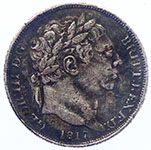 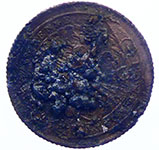 |
 |
 |
|||||||||||||||
| 1817 George III milled silver sixpence | Georgian trade weight - Crown G cipher | Georgian buckle | |||||||||||||||
Ancient gold nugget - 16.01mm L x 6 mm T 2.94g, |
|||||||||||||||||
81.24 L x 8.42mm W x 4.07mm T 11.21g
1stC BC to 1stC AD Celtic Woad cosmetic grinder - boat shaped The grinder was used to pulverise vegetable material such as woad in the preparation of dyes. These are also known as perfume or cosmetic grinders. During the Celtic period in Britain a biennial herb called Isatis Tinctoria; was cultivated for the blue dye that could be obtained from it when crushed. This plant is also known as woad. The dye would then be applied to the skin |
|||||||||||||||||
Gold wrist Torc fragment ? reported as treasure to museum 8.1g, 35mm L x 4.9mm dia |
|||||||||||||||||
|
|||||||||||||||||
1603 James 1st hammered silver half penny - Thistle mint mark - First coinage 0.28g, 9.87mm |
|||||||||||||||||
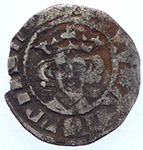 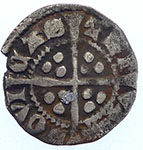 |
 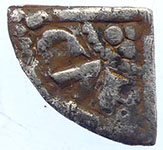 |
||||||||||||||||
1279 Edward 1st hammered silver penny - Class 9 Obv +EDWR ANGL DNS hYB Rev NOVI/CAS/TRI/VILL- Newcastle mint 1.11g,17.08mm |
1247 Henry III hammered silver voided longcross farthing 0.32g, 8.99mm |
||||||||||||||||
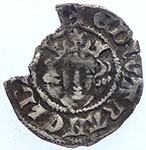  |
 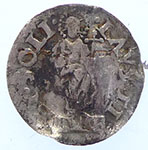 |
||||||||||||||||
1279 Edward 1st hammered silver penny - Class 9 Obv +EDWAR ANGL DNS hYB Rev CIVI/TAS/LON/DON - London mint |
Venetian soldino 1501-1521Leonardo Lauredan, Doge Rev: LAVS TIBI SOLI (Thee Alone be Praised). Haloed figure of Christ holding a cross. Obv: LE LAV DVX S M V (Leonardo Lauredan, Doge. St Mark of Venice.) Doge kneeling before Saint Mark. 0.23g, 12.01mm |
||||||||||||||||
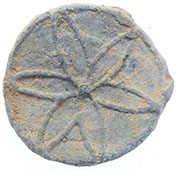 |
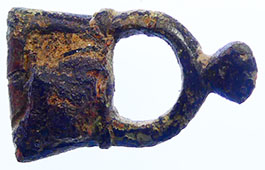 |
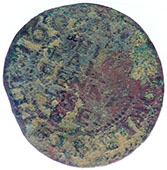 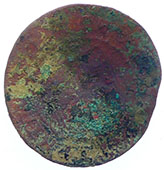 |
|||||||||||||||
| 17thC lead token | 1500- 1650 spur buckle | 1662 'His half penny' hammered copper trade half penny | |||||||||||||||
4thC Roman bronze coin - sent for ID - 2.0g, 18.38mm
You lucked out on this one - if I hadn't cataloged a couple of these recently I might not have recognized the SARMATIA DEVICTA centenionalis of 323-324 A.D. The reverse shows Sarmatia, walking right, carrying a trophy and palm-branch and treading-down a bound captive at her feet. Mark |
|||||||||||||||||
Interesting lead measuring cup |
|||||||||||||||||
  |
  |
||||||||||||||||
| Medieval bronze pot leg | 1922 George V milled silver sixpence | ||||||||||||||||
Gold casting waste 0.96g, 11.76mm |
|||||||||||||||||
 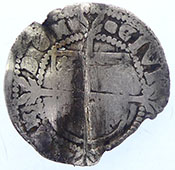 |
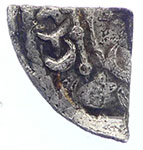 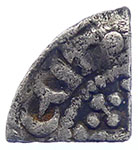 |
||||||||||||||||
| 1592-5 Elizabeth 1st hammered silver half groat - tun mint mark | 1247 Henry III hammered silver voided longcross farthing | ||||||||||||||||
 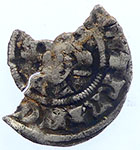 |
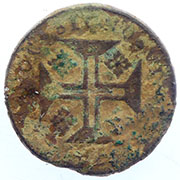  |
||||||||||||||||
1279 Edward 1st hammered silver penny Obv EDWAR R ANG *** Rev ***N/DON - London mint |
1740 1/2 Moidor Portuguese Coin Weight | ||||||||||||||||
  |
 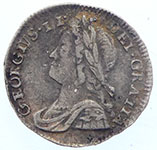 |
||||||||||||||||
| 18th George III milled gold guinea forgery | 1732 George II milled silver penny | ||||||||||||||||
 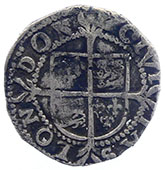 |
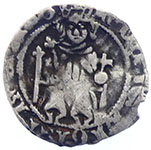 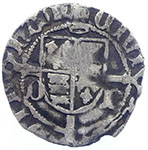 |
||||||||||||||||
| 1592-5 Elizabeth 1st hammered silver half groat - tun mint mark | 1485 - 1509 Henry VII hammered silver sovereign penny - DR by shield Bishop Sherwood |
||||||||||||||||
| 1840 Victoria milled silver penny | 1864 Victoria milled silver sixpence | ||||||||||||||||
 |
 |
  |
|||||||||||||||
| Victorain silver thimble | 17th C lead token | Georgian fob seal | |||||||||||||||
 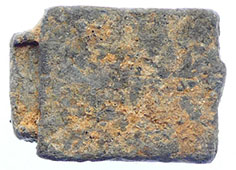 |
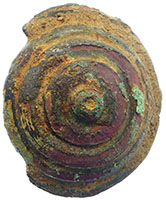 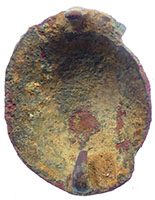 |
||||||||||||||||
| 19thC printing press block | 1500-1700 mount | ||||||||||||||||
  |
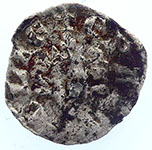  |
||||||||||||||||
| Post medieval lead steelyard weight | 1280 Edward 1st hammered silver farthing - Sterling silver issue no inner circle on Obv side Type 10 bust to edge of flan type Rev ERAN GLIE Rev LONDONIENSIS - London mint |
||||||||||||||||
Huge Victorian copper finial |
|||||||||||||||||
 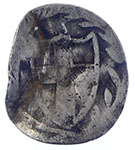 |
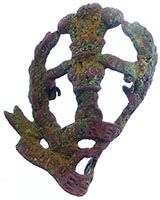 |
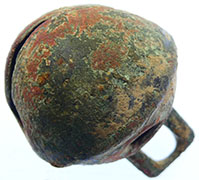 |
|||||||||||||||
| 1649 Commonwealth hammered silver penny | Middlesex regiment badge | 18thC crotal bell | |||||||||||||||
Iron Age tool ? |
|||||||||||||||||
 |
 |
 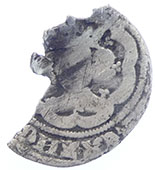 |
|||||||||||||||
| 1500-1700 mount | Capt / Commander - 1774-1787 RN Master & Mate - 1787-1807 RN Surgeon - 1787-1805 RN Purser - 1787-1807 |
1327 Edward III hammered silver half groat Rev CIVT**/***/DON - London mint |
|||||||||||||||
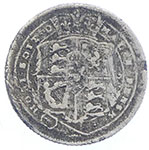  |
  |
||||||||||||||||
| 1816 George III milled silver sixpence | 1279 Edward 1st hammered silver penny Obv +EDW** DNS hYB Rev TAS/LON/DON - London mint |
||||||||||||||||
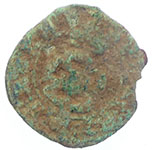  |
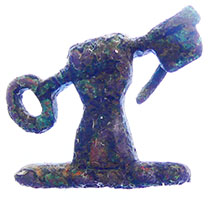 |
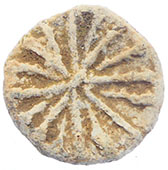 |
|||||||||||||||
| 1634 Chalres 1st hammered copper rose farthing | Interesting badge - hand holding a key ? | 17thC lead token | |||||||||||||||
1640's iron cannon ball 3.6oz, 1.2 inches |
|||||||||||||||||
Erarly 19thC copper Napoleon figurine |
|||||||||||||||||
 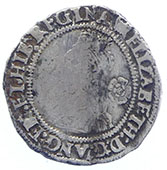 |
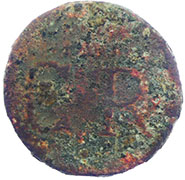 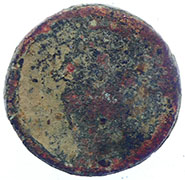 |
||||||||||||||||
| 1566 Elizabeth 1st hammered silver three pence | 17thC Charles 1st/2nd coin weight 'CR' |
||||||||||||||||
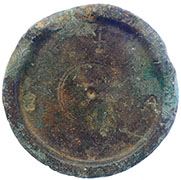  |
 |
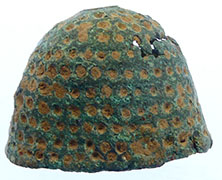 |
|||||||||||||||
| Georgian trade weight - Crown G cipher | Victorian 1oz trade weight | Medieval thimble | |||||||||||||||
|
  |
||||||||||||||||
1905 Brimingham silver sheet - pipe mount Marker TCG - T C Gooding & Co |
Post medieval lead cloth seal | ||||||||||||||||
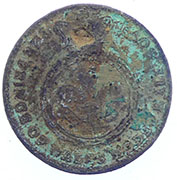 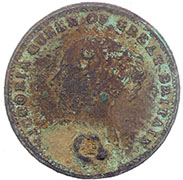 |
 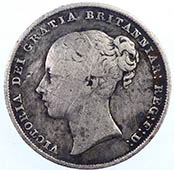 |
||||||||||||||||
1872 Victoria brass half sovereign The Prince of Wales ModelObverse Lettering: ReverseLettering: THE PRINCE OF WALES MODEL HALF SOVN
|
1844 Victoria milled silver shilling (12 pence) | ||||||||||||||||
 |
  |
||||||||||||||||
| 17thC lead token | 1853 Victoria milled silver sixpence | ||||||||||||||||
  |
  |
||||||||||||||||
| 1696 William III milled silver sixpence- love token | 20th Alloy pendant 'Cherish this and prosper' |
||||||||||||||||
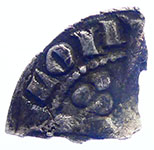  |
 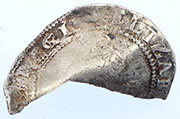 |
||||||||||||||||
1279 Edward 1st hammered silver farthing Rev /LON - London mint |
1590 Elizabeth 1st hammered silver sixpence | ||||||||||||||||
Moved finds to new page2023 April finds page |
|||||||||||||||||
 |
|||||||||||||||||

